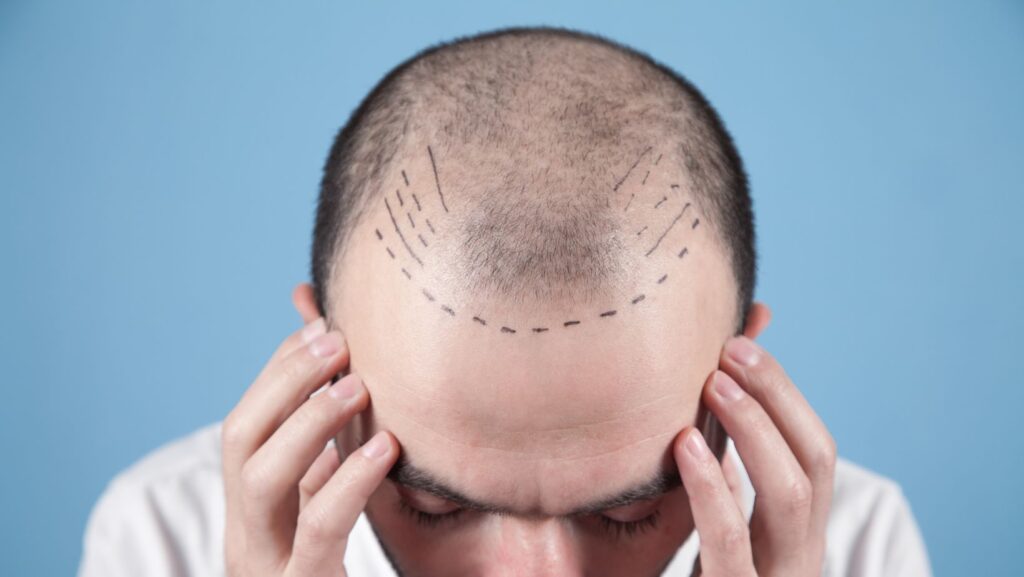
Everything You Need to Know About Hair Transplants
Hair loss is a universal concern for most individuals. Whether caused by genetics, aging, hormonal changes, or medical conditions, losing hair can deeply impact self-esteem and confidence. The emotional toll of hair loss can be significant, leading individuals to seek solutions that restore not only their hair but also their sense of self-worth. The good news is that advances in hair restoration techniques have made it possible to regain a full, natural-looking head of hair, providing both aesthetic and psychological benefits.
One of the most effective solutions to address hair loss is a hair transplant. This transformative procedure has become increasingly popular, particularly in cities like New York, where access to cutting-edge medical expertise is unparalleled. For those seeking hair restoration solutions, opting for a hair transplant in NYC can provide access to some of the best surgeons and facilities in the field. Understanding the hair transplant process and its benefits can help individuals make informed decisions about their journey to hair restoration.
What is a Hair Transplant?
A hair transplant is a surgical procedure that involves moving hair follicles from one part of the body, typically the back or sides of the scalp (the donor area), to areas experiencing thinning or balding (the recipient area). This procedure has come a long way over the decades, evolving from rudimentary techniques to highly advanced methods that deliver natural and seamless results.
Modern hair transplant techniques focus on precision and artistry. Unlike older methods that often resulted in an unnatural “plugged” appearance, today’s procedures aim to mimic the natural growth pattern of hair. The two most widely used techniques are Follicular Unit Transplantation (FUT) and Follicular Unit Extraction (FUE). Each method has its unique advantages and is chosen based on the patient’s specific needs.
Follicular Unit Transplantation (FUT)
FUT, commonly referred to as the “strip method,” involves removing a thin strip of scalp from the donor area. This strip is then divided into individual follicular units, which are meticulously transplanted into the recipient area. FUT is particularly effective for individuals requiring a large number of grafts, as it allows for the harvesting of a significant volume of hair. While it may leave a linear scar, this is usually well-concealed by surrounding hair and does not detract from the overall results.
Follicular Unit Extraction (FUE)
FUE is a more advanced and minimally invasive technique. Instead of removing a strip of scalp, individual hair follicles are extracted directly from the donor area using a small, precise punch tool. These follicles are then implanted into the recipient area. FUE is a popular choice for patients seeking a less invasive procedure with a shorter recovery time. Additionally, it does not leave a linear scar, making it ideal for those who prefer shorter hairstyles.
The Benefits of a Hair Transplant
Undergoing a hair transplant offers numerous benefits that extend far beyond restoring hair. These benefits can significantly improve both physical appearance and emotional well-being.
Natural Results
Modern hair transplant techniques are designed to create results that are virtually indistinguishable from natural hair. Surgeons meticulously design the hairline to complement the patient’s facial features, ensuring the outcome enhances their overall appearance. The transplanted hair grows naturally, blending seamlessly with existing hair to provide a full and aesthetically pleasing look.
Permanent Solution
Unlike temporary solutions such as wigs or topical treatments, a hair transplant offers a permanent solution to hair loss.

The transplanted hair follicles are resistant to DHT, the hormone responsible for most hair loss conditions. As a result, the newly transplanted hair remains healthy and continues to grow for a lifetime.
Boosted Confidence
Hair loss can take a significant toll on an individual’s confidence and self-image. Restoring a full head of hair often leads to a renewed sense of self-esteem. Many patients report feeling more comfortable in social and professional settings after their procedure, making the investment in a hair transplant well worth it.
Low Maintenance
One of the most appealing aspects of a hair transplant is that the transplanted hair requires no special maintenance. Once it begins to grow, it can be washed, styled, and treated like natural hair. Patients can enjoy the convenience of a permanent solution without the need for ongoing treatments or products.
Choosing the Right Surgeon in New York City
Selecting a skilled and experienced surgeon is one of the most critical steps in achieving a successful hair transplant. New York City is home to some of the world’s most renowned hair restoration specialists, making it an excellent place to undergo the procedure. However, it’s essential to carefully evaluate potential surgeons to ensure optimal results.
Credentials and Experience
When choosing a surgeon, prioritize those with extensive experience in hair restoration. Look for a practitioner with a strong background in facial aesthetics and a proven track record of successful procedures. This expertise ensures that the results are both natural and long-lasting.
Before-and-After Photos
Examining before-and-after photos of previous patients can provide valuable insight into a surgeon’s skill and attention to detail. Focus on the natural appearance of the hairline, density of the results, and overall symmetry.
Patient Feedbacks and Testimonials
Reading reviews from past patients can offer additional perspective on the surgeon’s capabilities and patient satisfaction. Positive testimonials often highlight the surgeon’s professionalism, care, and ability to deliver exceptional results.
Advanced Technology
Leading clinics in NYC often utilize state-of-the-art technology to enhance the precision and efficiency of hair transplant procedures. Tools such as robotic-assisted FUE systems and high-resolution imaging ensure optimal outcomes.
Personalized Consultation
A thorough consultation is an essential part of the process. A reputable surgeon will take the time to understand your goals, assess your hair loss pattern, and develop a customized treatment plan tailored to your needs.
The Procedure: What to Expect
Understanding the hair transplant process can alleviate any apprehension and help you feel prepared for the journey. Here is an overview of the typical steps involved:
Pre-Procedure Preparation
Before your surgery, your surgeon will provide specific instructions to ensure the procedure goes smoothly. This may include avoiding certain medications, alcohol, and smoking in the days leading up to the surgery. Your hair may also be trimmed in the donor and recipient areas to facilitate the procedure.
Anesthesia
The procedure is performed under local anesthesia to ensure a comfortable experience. Some patients may also receive a mild sedative to help them relax during the surgery.
Graft Extraction
Depending on the chosen technique, hair follicles are either extracted individually (FUE) or harvested from a donor strip (FUT). This step requires precision and care to preserve the integrity of each follicle.
Graft Placement
After extraction, the surgeon creates tiny incisions in the recipient area and carefully implants each follicle.

This meticulous process ensures that the transplanted hair grows in a natural direction and pattern.
Post-Procedure Care
Following the surgery, you will receive detailed aftercare instructions. These guidelines include how to clean the treated areas, what activities to avoid, and how to promote optimal healing. Any mild discomfort or swelling typically resolves within a few days.
Recovery and Results
Recovery from a hair transplant is relatively straightforward, especially with minimally invasive techniques like FUE. Most patients can return to their regular activities within a week, although it’s advisable to avoid strenuous exercise for at least two weeks.
Initially, the transplanted hair may shed within the first few weeks, a normal process known as “shock loss.” This temporary phase is followed by new hair growth, which typically begins around three to four months post-procedure. Full results are visible within 12 to 18 months, revealing a fuller, natural-looking head of hair that can last a lifetime.
Is a Hair Transplant Right for You?
A hair transplant is an excellent option for individuals experiencing significant hair loss, but it’s essential to determine if you are a suitable candidate. Factors such as age, hair loss pattern, overall health, and realistic expectations play a crucial role in the decision-making process. Consulting with a qualified surgeon will help you understand whether a hair transplant is the right choice for you.
Hair transplants have revolutionized the way individuals address hair loss, offering a permanent and natural solution. For those considering this life-changing procedure, New York City provides access to top-tier medical expertise and advanced techniques. By understanding the procedure, benefits, and recovery process, you can make an informed decision and take a confident step toward restoring not only your hair but also your self-esteem.





